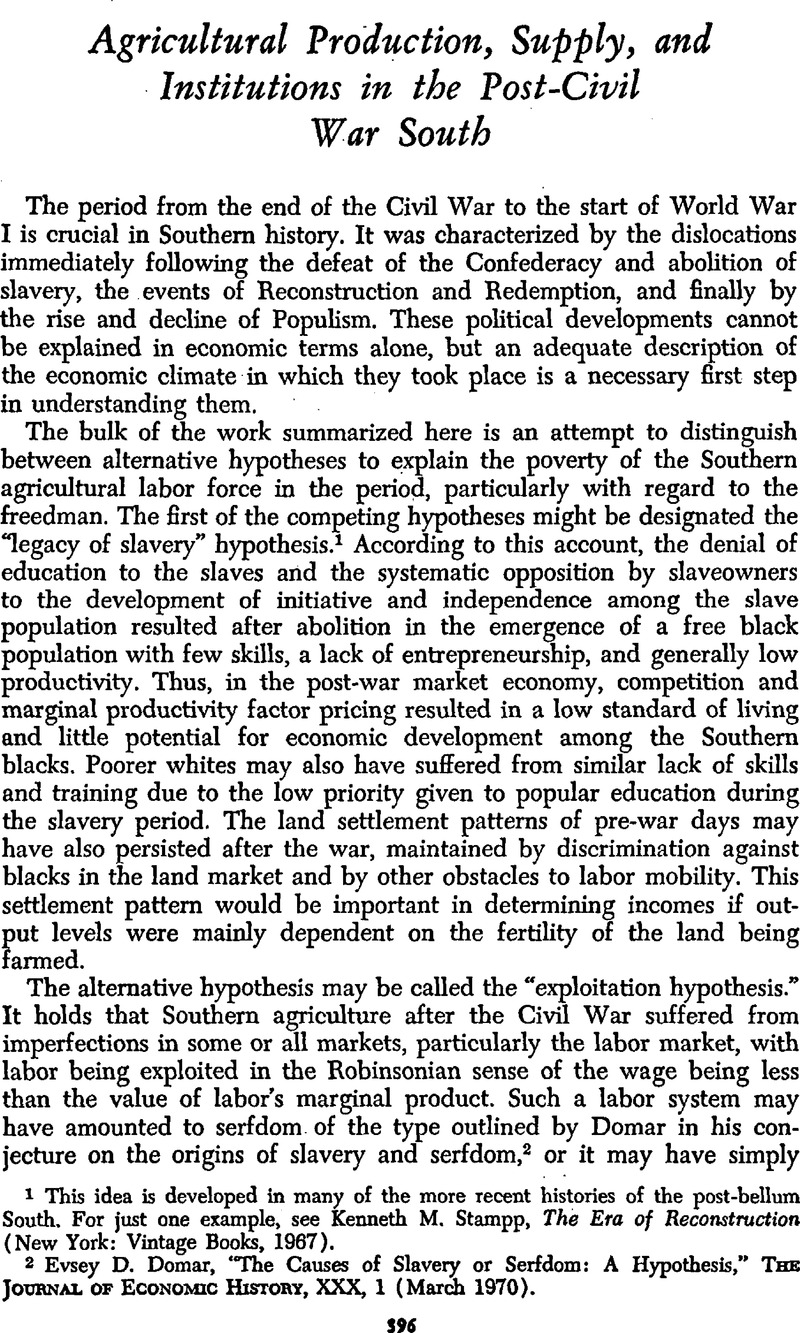Published online by Cambridge University Press: 11 May 2010

1 This idea is developed in many of the more recent histories of the post-bellum South. For just one example, see Stampp, Kenneth M., The Era of Reconstruction (New York: Vintage Books, 1967).Google Scholar
2 Domar, Evsey D., “The Causes of Slavery or Serfdom: A Hypothesis,” The Journal of Economic History, XXX, 1 (March 1970).Google Scholar
3 Hilgard, Eugene W. (ed.), Report on Cotton Production in the United States, Also Embracing Agricultural and Physico-Geographical Descriptions of the Several Cotton States and of California, 2 vols. (Washington: U. S. Government Printing Office, 1884).Google Scholar
4 It should be pointed out, however, that exploitation in other markets is not ruled out. For example, the country stores may have exercised market power against farmers in their capacity as consumers. The behavior and profitability of the country stores warrants more investigation.
5 For estimates of wheat supply functions, see Fisher, Franklin M. and Temin, Peter, “Regional Specialization and the Supply of Wheat in the United States, 1867–1914,” Review of Economics and Statistics, LII, 2 (May 1970).Google Scholar